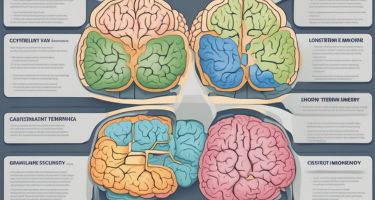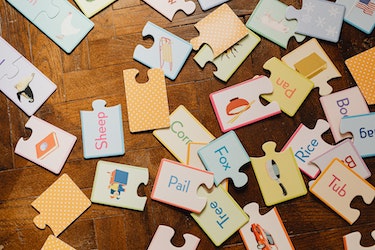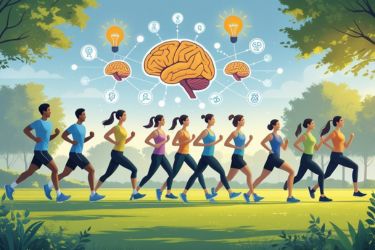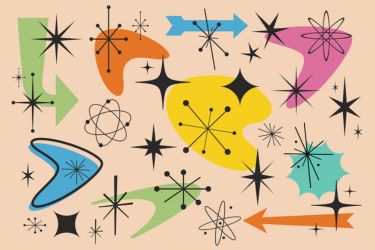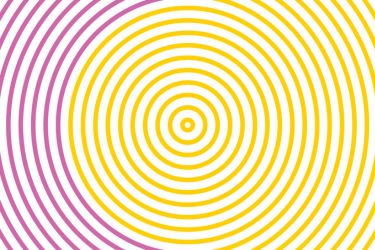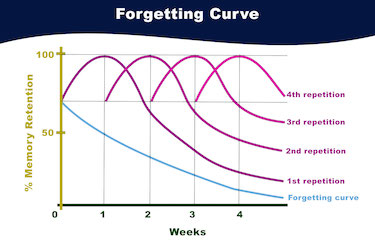We’ve all faced those moments when we just can’t remember important facts, whether it’s the order of planets or a tough spelling rule. Mnemonic devices are simple memory tricks that help us organise and recall information more easily. From catchy phrases like “Please Excuse My Dear Aunt Sally” to funny rhymes and creative acronyms, these tools have stuck around for a reason—they really do work.

Even in a world full of modern technology, old-school mnemonic techniques still offer quick and effective ways to keep information at hand. By using patterns, associations, and short stories, we can make even the hardest details stick in our minds. Let’s look at why these memory tricks continue to matter and how we can use them in our everyday lives.
Key Takeaways
- Mnemonic devices are reliable tools for remembering tricky information.
- Classic memory tricks still help us learn and recall details today.
- Adopting these methods makes managing daily facts much simpler.
The Enduring Value of Mnemonic Devices
Mnemonic devices are practical tools that have helped people improve memory for centuries. These strategies make it easier to recall information by linking facts with simple cues, catchy phrases, or visual images. Understanding how they work, why they remain effective, and which methods are proven classics helps us use them to our advantage.
What Is a Mnemonic Device?
A mnemonic device is any technique that supports memory recall. We use these devices to turn hard-to-remember facts into something memorable using associations, rhymes, acronyms, or images.
For example, we might remember the order of the planets with a sentence like "My Very Educated Mother Just Served Us Noodles." This links each word’s initial letter to a planet (Mercury, Venus, Earth, Mars, Jupiter, Saturn, Uranus, Neptune).
Rhymes and patterns are common features in mnemonic strategies. Sometimes, colour, shape, or even movement can be used as cues. The key is making information stick by connecting it to something familiar or fun.
Why Old-School Tricks Still Matter
Even with new technology, research shows that mnemonic devices work because they shape material into a more meaningful or easy-to-grasp form. They help us anchor new information to existing knowledge, which boosts our memory and recall.
These methods are especially useful for learning facts or long lists that may not have clear links between items. For students, mnemonics are popular because they simplify complex topics, such as scientific classifications or historical dates.
We often find that these strategies are flexible and adaptable in our daily lives. Whether it’s remembering grocery lists, names, or steps in a process, simple cues — like acronyms or phrases — make retrieval faster and less stressful.
Overview of Classic Memory Strategies
There are several well-known mnemonic strategies that people have used across generations. Some of the most effective include:
| Mnemonic type | Example | Purpose |
|---|---|---|
| Acronyms | ROYGBIV (colours of the rainbow) | Remember sequences or lists |
| Acrostics | Every Good Boy Deserves Fruit (music notes) | Recall ordered information |
| Rhymes | Thirty days hath September… | Memorise facts with a repetitive pattern |
| Imagery | Turning letters into pictures for early literacy | Connect abstract symbols with concrete images |
We use these classic strategies in school, work, and daily routines because they are simple, flexible, and proven to improve memory with minimal effort. Different people may find that certain techniques suit them better, making them valuable tools for lifelong learning.
Types of Mnemonic Devices That Still Work
Mnemonic devices help us encode and recall facts quickly. Different memory techniques, like acronyms, acrostics, and rhymes, can match how we prefer to learn and make hard-to-remember information much easier to manage.
Acronyms Explained
Acronyms use the first letters of a series of words to create a new, easily remembered word or phrase. This tool is especially useful when we must recall lists, steps, or groups. For example, "NATO" stands for North Atlantic Treaty Organisation, and "NASA" is National Aeronautics and Space Administration.
We often use acronyms in science, geography, and everyday life. For instance, "ROYGBIV" helps us remember the colours of the rainbow: Red, Orange, Yellow, Green, Blue, Indigo, Violet. Acronyms give structure, making information less overwhelming.
They work best when each letter clearly links to a single item we need to remember. Acronyms are also easy to customise for our own learning needs. Creating a simple table can help visual learners:
| Acronym | What it Stands For |
|---|---|
| NASA | National Aeronautics and Space Administration |
| NATO | North Atlantic Treaty Organisation |
| ROYGBIV | Red, Orange, Yellow, Green, Blue, Indigo, Violet |
Understanding Acrostics
Acrostics turn the first letters of items we want to remember into the first letter of each word in a sentence. Unlike acronyms, acrostics make full sentences, which means we can weave facts into a memorable phrase.
A common example is “Every Good Boy Deserves Fruit”, where the first letters stand for E, G, B, D, F—the notes on the lines of the treble clef in music. Acrostics are helpful for recalling sequences or orders.
This method works because forming a sentence helps our brains make personal connections to the information. We can create acrostics for any subject or list. The simpler and more familiar the sentence, the more likely it is we will remember it.
Rhymes and Songs for Recall
Turning facts into rhymes and songs is another nostalgic and still powerful memory technique. Rhymes use patterns and repetition, which make words stick. For math, we might use, “Thirty days hath September, April, June, and November,” to memorise the number of days in each month.
Songs can be even more effective, especially if set to a familiar tune. Many of us learned the alphabet by singing the “ABC Song”. This method combines melody, rhythm, and movement, which boosts recall.
Rhymes and songs work because music and rhyme both tap into parts of our brain linked to pattern recognition. Even as adults, we find that setting information to a tune or rhythm helps us recall details years later. This makes these techniques suitable for all ages and subjects.
Method of Loci and the Memory Palace
The method of loci, also called the memory palace technique, helps us recall information by linking it to places we know. By picturing a journey or familiar space, we make it easier to store and retrieve facts.
Origins and Historical Context
The method of loci began many centuries ago. Historians say it dates back to ancient Greece, where the poet Simonides of Ceos first described using location to remember details. After a disaster at a banquet, Simonides reportedly reconstructed the guest list by visualising where each person sat.
Greek and Roman orators later used this technique to remember speeches. Texts like Cicero's De Oratore and Rhetorica ad Herennium mention how speakers turned their homes or public buildings into mind maps for recalling information in order. The method spread through Europe and is still taught to memory champions today.
Building Your Own Memory Palace
To use the memory palace technique, we start by choosing a place we know well, such as our house or route to school. Each part of this place—rooms, doors, furniture—becomes a “location” for storing information. For example, we might put the first thing to remember by our front door and the next item on the kitchen table.
We then create vivid, memorable images to place in each spot. The stranger or more unusual the image, the easier it is to remember. Using sights, sounds, and even smells makes the pictures stronger. When we need to remember the items, we walk through the space in our minds and see each scene again.
This tool works because our brains link memories with spatial context. Practice makes it easier to create and walk through these palaces quickly.
The Journey Method in Practice
The journey method is a practical way to use the method of loci. Instead of one building, we use a route—like our walk to school or commute to work. We envision clear stops along the journey, such as landmarks, shops, or street corners.
Let’s say we need to memorise a shopping list. We can place “milk” at the bus stop, “bread” by the traffic lights, and “apples” at the corner shop. When recalling, we mentally travel the route and collect each item in turn.
Memory athletes often use long journeys and many locations to remember complex lists, speeches, or facts in sequence. The journey method works for lists, speeches, and even exam facts because it provides structure and order, reducing confusion and making information easier to retrieve.
Association and Chunking: Making Memories Stick
We can sharpen our memory by making connections and breaking information into manageable pieces. These two methods help us remember new knowledge and use it when we need it, whether for exams, daily tasks, or learning new skills.
Using Association for Longer Recall
Association helps us remember by linking new facts to things we already know. When we form a mental connection, such as matching a person’s name to a famous celebrity, it stands out more clearly in our memory. We can use visual images, stories, or even places to strengthen these links.
Simple association works well for remembering lists. For example, to recall a shopping list, we might picture each item in a specific room of our house. This creates a strong mental image, making recall easier. The more creative or unusual the association, the more likely we are to remember it.
We can also use association to move information from short-term memory into long-term memory. By revisiting and reshaping these links, we make the memory stronger and more lasting.
Chunking Information for Efficiency
Chunking means breaking down large amounts of information into smaller, related groups or “chunks”. Our brains can only handle a limited number of items in short-term memory—usually around five to nine at once. By grouping bits of information, we make them easier to manage.
For example, we often remember phone numbers by splitting them into sections: “0767 – 123 – 456.” This makes it much less overwhelming than trying to memorise all the digits at once.
Chunking helps with facts, dates, names, or vocabulary. Instead of treating each item as separate, we gather similar items together. Here’s a simple table showing how it can help:
| List (No Chunking) | List (Chunked) |
|---|---|
| G, B, O, W, R, Y, I, V | GBO, WRY, IV |
With chunking, information is easier to process and less likely to be forgotten. This method helps us work with both short-term and long-term memory when learning new material.
Applying Mnemonic Strategies in Everyday Life
We can use mnemonic strategies in many parts of our lives to make learning, working, and even daily tasks more manageable. These techniques help us improve memory, organise thoughts, and keep track of important information with less effort.
Education and Study Skills
When we study for exams or try to learn new material, it's easy to feel overwhelmed. Mnemonic devices like acronyms and acrostics break big ideas into smaller, simpler parts. For example, to remember the order of mathematical operations, we use “BODMAS” (Brackets, Orders, Division, Multiplication, Addition, Subtraction).
Rhymes and songs can also help us remember facts, such as historical dates or vocabulary words. We can use visual images and stories to link new knowledge to something we already know, making it easier to recall during tests.
Creating flashcards using these memory aids supports spaced repetition, which is proven to help us remember information longer. By regularly using mnemonics for studying, we can reduce stress and perform better in school.
Professional Uses of Mnemonics
In the workplace, mnemonic devices are valuable for remembering procedures, codes, or lists. For example, healthcare workers rely on acronyms like “FAST” (Face, Arms, Speech, Time) to recognise the signs of a stroke quickly.
Salespeople may use acrostics to remember key points during presentations. In IT or technical fields, chunking long strings of numbers, like passwords or IP addresses, can make them easier to recall.
Making use of simple memory tricks saves time and reduces mistakes, especially when information needs to be retrieved quickly. We can even create our own mnemonics tailored to our specific tasks, helping us increase efficiency at work.
Daily Habits for Better Memory
We encounter countless small tasks every day—shopping, appointments, or errands. Mnemonic aids such as rhymes or mental associations help us remember grocery lists or daily chores without always needing a written reminder.
Remembering people’s names can be easier if we link names to a rhyme or a feature (“Sandy with sandy hair”). Associating items with familiar locations, known as the loci method, is effective for tasks like remembering where we parked the car.
By making mnemonic strategies part of our daily routines, we not only improve our memory but also become more organised and less likely to forget important tasks. Small changes like these can make a noticeable difference.
Frequently Asked Questions
We rely on a range of mnemonic devices to remember facts, lists, vocabulary, and other information. These tools can be tailored for different subjects and learning needs, making them useful at any age.
What are some classic examples of mnemonic devices used for remembering lists?
One classic example is "ROYGBIV", which stands for the colours of the rainbow: Red, Orange, Yellow, Green, Blue, Indigo, Violet.
Another is "My Very Educated Mother Just Served Us Noodles" for the planets in our solar system. Each word's first letter matches a planet, helping us recall the correct order.
How can you create your own mnemonic for complex information?
First, break the information into smaller parts. Then, use the first letter of each item to make a word or phrase that is easy to remember.
We can also use rhymes, stories, or images to help make the information stick. The key is to make it personal and memorable for us.
What mnemonic tricks are commonly taught in educational institutions?
In schools, students often learn acronyms, acrostics, and rhyming phrases. For example, "Every Good Boy Deserves Fruit" helps us remember the notes of the lines on a musical stave (E-G-B-D-F).
"Never Eat Shredded Wheat" is commonly used to remember compass directions in order: North, East, South, West.
Where can I find a comprehensive list of mnemonics for various study subjects?
Reliable sources include textbooks, educational websites, and study guides. We can also find collections of mnemonics on websites dedicated to memory techniques or on school and university resource pages.
Some sites, such as BrainMatters and StudySmarter, regularly update their lists with helpful examples for different subjects.
Which mnemonic device is related to using one's knuckles to remember the number of days in each month?
We can use the "Knuckle mnemonic" to count the number of days in each month. By making a fist and starting with the knuckle of our index finger, each raised knuckle represents a 31-day month and each dip represents a shorter month.
Moving from left to right across our knuckles, we can quickly check how many days are in each month.
What are some effective mnemonic strategies for mastering English vocabulary?
We can build associations between the new word and a similar-sounding familiar word. Creating short, vivid stories or mental pictures that connect the word to its meaning often helps.
Another effective strategy is using sentence mnemonics, where each word in the sentence starts with the same letter as each vocabulary word we need to remember. Repetition and consistent use of these strategies further strengthen our recall.


